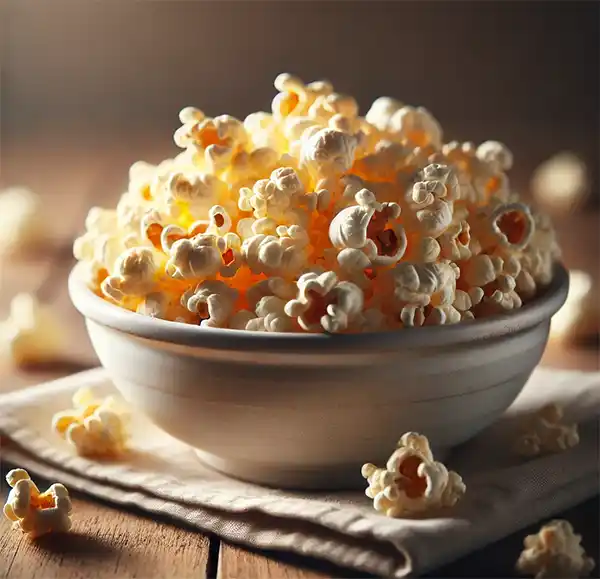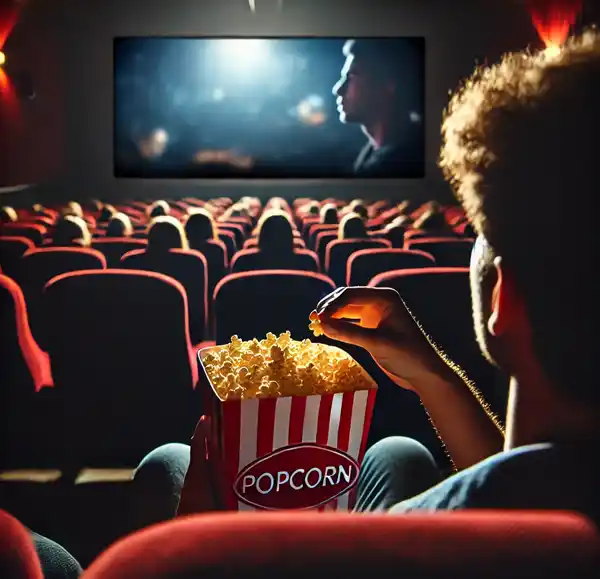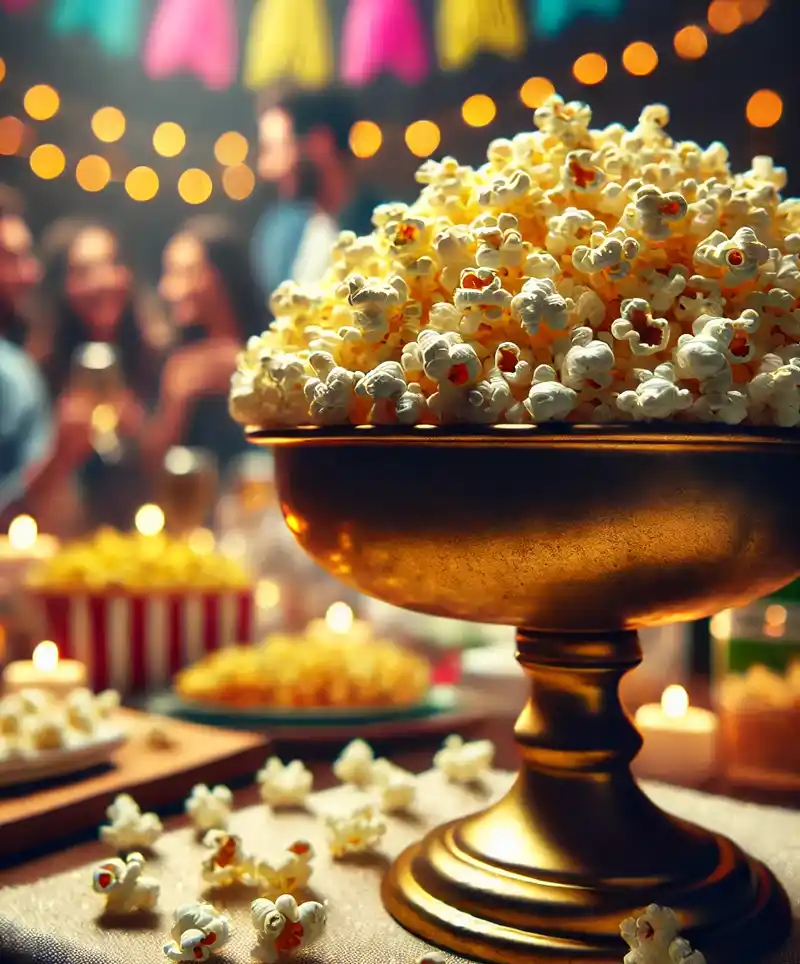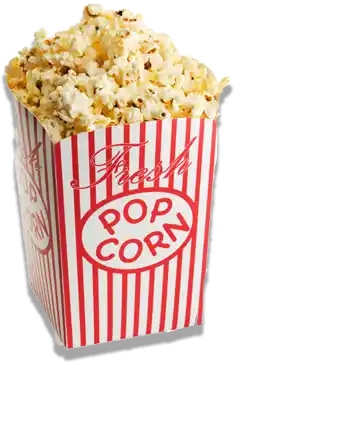Popcorn is a delightful snack with a personality as explosive as its cooking method. There’s no better time to celebrate this crispy, buttery wonder than on National Popcorn Day. Observed annually on January 19th, this day is dedicated to honoring the snack that has accompanied humanity through movies, fairs, and countless cozy nights in. Let’s dive into the delicious history, science, and all-around magic of popcorn—one kernel at a time.

From Ancient Fields to Modern Bowls
Popcorn isn’t just a trendy snack; it’s an ancient marvel. The first evidence of popped corn dates back over 5,000 years, discovered in the caves of what is now New Mexico. Indigenous peoples of the Americas were the original popcorn aficionados, popping kernels over open flames or hot sand long before the invention of microwave ovens.
Popcorn played an essential role in many Indigenous cultures, not just as food but also in rituals and ceremonies. Early Spanish explorers recorded seeing popcorn used in Aztec ceremonies as offerings to gods, and it was even fashioned into decorative garlands and headdresses. Its ability to transform from a hard, unassuming kernel into a fluffy treat must have seemed almost magical, earning it a special place in their traditions.
By the 19th century, popcorn became a staple at fairs and circuses, thanks to the invention of the steam-powered popcorn maker by Charles Cretors in 1885. His ingenious contraption brought popcorn to the masses, and it’s been a crowd favorite ever since. If Charles had known he was paving the way for future movie nights, he might have popped open a bottle of champagne to celebrate—or at least an extra bag of corn. During the Great Depression, popcorn’s affordability made it one of the few luxuries people could still enjoy, solidifying its place in American culture.
The Science of the Pop
Ever wonder why popcorn pops? It’s all about physics and a bit of culinary magic. Each kernel has a hard outer shell, called the pericarp, and a starchy interior. When heated, moisture inside the kernel turns to steam, creating pressure. At around 180 degrees Celsius (356 degrees Fahrenheit), the pericarp bursts, and the starch inside expands and cools rapidly, forming that fluffy, edible cloud we all love. Essentially, popcorn is nature’s way of saying, “I’m full of hot air, but in the best way possible.”
Interestingly, not all kernels are created equal. The ideal moisture content for popping is around 14%, and the thickness of the pericarp plays a crucial role. Kernels that lack sufficient moisture or have damaged shells simply don’t pop. Scientists have even studied the acoustics of popping, discovering that the sound we hear is caused by a tiny puff of steam escaping as the kernel explodes. Talk about snack-time science!
Popcorn’s unique popping ability is limited to specific varieties of maize. Unlike sweet corn or field corn, popping corn has just the right combination of a tough shell and a starchy interior. Without this perfect balance, popcorn wouldn’t exist—and neither would National Popcorn Day.

A Love Story
No discussion of popcorn would be complete without mentioning its iconic relationship with cinema. Surprisingly, popcorn wasn’t always welcome in theaters. In the early 20th century, cinemas were considered high-class establishments, and the thought of munching a snack during a film was seen as uncouth. However, the Great Depression changed that—popcorn was cheap, filling, and easy to sell. By the 1940s, the buttery aroma of popcorn had become as essential to movie theaters as projectors and sticky floors.
The Flavor Explosion
While traditional butter and salt are classics, the world of popcorn flavors has expanded dramatically. From caramel-coated creations to spicy jalapeño-infused bites, popcorn’s versatility is unmatched. Fancy something savory? Try truffle-flavored popcorn. Feeling adventurous? How about a dill pickle or wasabi twist? And for the true connoisseurs, gourmet popcorn shops offer blends with ingredients so fancy they make regular snacks look like, well, plain kernels.
The creativity doesn’t stop there. Chocolate-drizzled popcorn has become a dessert favorite, while savory enthusiasts are experimenting with bacon, cheese, and even sriracha-coated kernels. For health-conscious snackers, lighter options like herb-seasoned or nutritional yeast-topped popcorn offer a flavorful punch without the guilt. The ability to tailor popcorn to suit any taste or occasion makes it a snack for everyone, whether you’re on a health kick or indulging your sweet tooth.
Health Benefits: Yes, Really!
Popcorn gets a bad rap as a junk food, but it’s actually a whole grain, packed with fiber and antioxidants. Air-popped popcorn, without added butter or salt, is a low-calorie snack that’s surprisingly good for you. Of course, most of us prefer our popcorn drenched in butter or caramel, but hey, we’re here to celebrate, not judge.
One of popcorn’s unsung benefits is its high fiber content, which can aid in digestion and promote a feeling of fullness, making it a great snack for those watching their weight. It’s also rich in polyphenols, which are antioxidants linked to improved heart health and reduced inflammation. Unlike many processed snacks, popcorn has no artificial additives or preservatives when prepared simply, making it a wholesome choice in its natural form.
For those seeking a balanced diet, pairing popcorn with protein-rich toppings like peanut butter powder or a sprinkle of parmesan cheese can elevate its nutritional value. And let’s not forget—popping your own at home allows you to control the ingredients, ensuring a snack that’s as healthy (or indulgent) as you want it to be.
Fun Popcorn Facts to Impress Your Friends
Popcorn isn’t just fun to eat—it’s also full of fascinating trivia that can turn any snack break into a learning experience. Whether you’re a history buff, a science nerd, or just someone who likes to know quirky facts, popcorn has something to offer. Here are some fun tidbits to munch on while you enjoy your favorite flavor:
- The largest popcorn ball ever made weighed over 9,370 pounds. That’s one party-sized snack!
- Americans consume about 15 billion quarts of popcorn annually—enough to fill the Grand Canyon (okay, maybe not quite, but close!).
- Nebraska produces the most popcorn in the United States. The Cornhusker State lives up to its name!
Celebrate National Popcorn Day in Style
So, how should one honor National Popcorn Day? The possibilities are endless. Host a popcorn-tasting party with a variety of flavors, or challenge yourself to create a homemade popcorn recipe. For the cinephiles, plan a movie marathon with an endless supply of the snack. And if you’re feeling philanthropic, consider donating popcorn to a local shelter or community event—because everyone deserves a little crunch in their lives.
In conclusion, popcorn is more than just a snack; it’s a cultural icon, a scientific marvel, and a deliciously adaptable treat. So, on this National Popcorn Day, let’s raise a bowl (or bucket) to the humble kernel that’s been popping its way into our hearts for millennia. After all, life is better with a little pop and a lot of flavor.
Please Share our Content

















 "Sláinte!" is a traditional Irish expression used as a toast, equivalent to "Cheers!" in English.
"Sláinte!" is a traditional Irish expression used as a toast, equivalent to "Cheers!" in English.